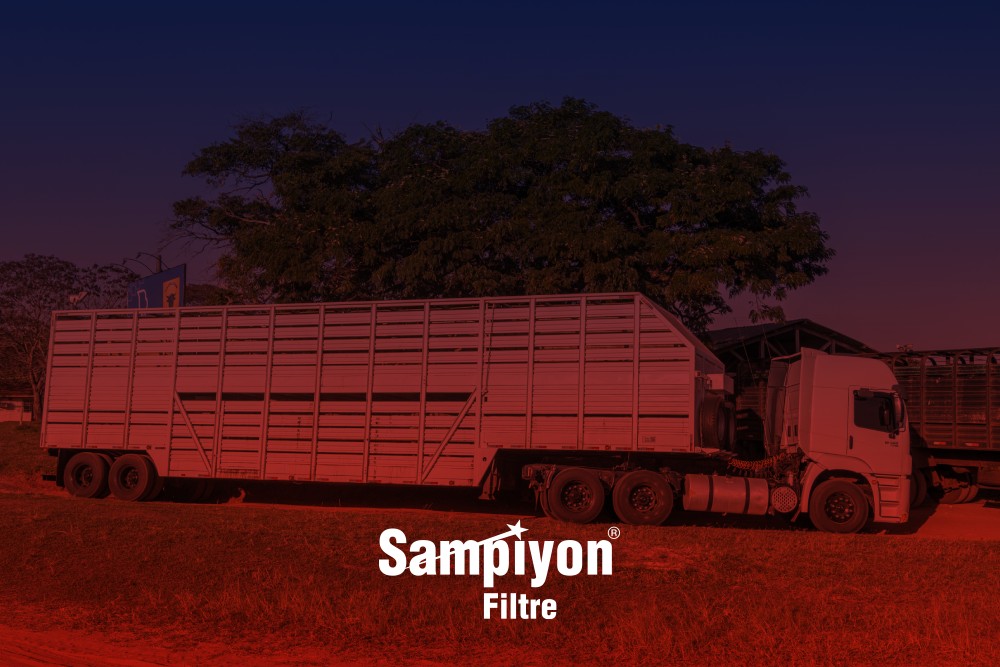
Materials Required for Filter Replacement: A Complete DIY Guide
Replacing your car’s filters—whether air, oil, fuel, or cabin—is one of the most impactful yet manageable maintenance tasks for any vehicle owner.April 9, 2025
Replacing your car’s filters—whether air, oil, fuel, or cabin—is one of the most impactful yet manageable maintenance tasks for any vehicle owner.
While many people leave it to mechanics, doing it yourself can save money, help you better understand your vehicle, and give you the confidence to handle more car maintenance in the future.
But before you roll up your sleeves, it's essential to have the right tools and materials in place. In this guide, we’ll walk through everything you need to perform a proper filter replacement—step by step—with a particular focus on safety, effectiveness, and precision. Whether you're changing a Şampiyon Filter air filter or a fuel filter, being prepared is the key to success.
1. The Right Replacement Filter
The most important item you need is, of course, the filter itself. But it’s not as simple as grabbing any filter off the shelf. You need to:
- Check compatibility with your vehicle’s make, model, and year.
- Choose the correct filter type—air, oil, cabin, or fuel.
- Ensure quality by choosing a reliable brand like Şampiyon Filter, known for its high-efficiency filtration, durability, and OE-standard fit.
- Tip: If you’re unsure about the correct filter, consult your vehicle owner’s manual or Şampiyon Filter’s online catalog, which allows you to search by vehicle details.
2. Screwdrivers or Socket Set
Depending on the filter type and location, you’ll need either:
- Flathead or Phillips screwdrivers (commonly used for air filter boxes and cabin filter covers),
- Or a socket wrench set for oil or fuel filter access points.
- Note: A ratchet wrench with extensions can make it easier to reach tight spaces, especially around engine-mounted fuel filters.
3. Oil Filter Wrench (For Oil Filter Replacement)
Oil filters are often tightly sealed and become even more difficult to remove due to heat and pressure. An oil filter wrench gives you the leverage to loosen the filter without damaging it.
There are several types:
- Band-style wrenches
- Claw wrenches
- Cap wrenches
- Tip: Choose a filter wrench that matches the diameter of your filter for better grip and safety.
4. Oil Drain Pan and Funnel (For Oil and Fuel Filters)
- When replacing the oil or fuel filter, fluid will inevitably leak. A good drain pan is essential to catch any oil or fuel, preventing environmental mess and helping with safe disposal.
- You’ll also need a funnel for adding new engine oil (if doing an oil filter change) or bleeding air after a fuel filter change.
- Eco-tip: Always dispose of old oil and fuel according to local regulations. Never pour them down drains or into the soil.
5. Clean Rags or Shop Towels
Keep a few lint-free rags or disposable shop towels handy. These are crucial for:
- Wiping down filter housings before installation
- Cleaning up spills
- Handling used filters without spreading grease
- Bonus: Microfiber cloths can also be used to clean air filter boxes or cabin filter slots without scratching plastic surfaces.
6. Nitrile or Latex Gloves
Your hands will come into contact with oil, dust, and fuel—none of which you want lingering on your skin. Wearing disposable nitrile or latex gloves keeps your hands clean and protects your skin from irritants and chemicals.
- Jack and Jack Stands (If Needed)
- For oil or fuel filters that are located underneath the vehicle, you may need to lift the car to gain access. A hydraulic jack and a set of jack stands will provide safe and stable elevation.
- Safety tip: Never work under a car supported only by a jack. Always use jack stands to prevent accidents.
8. Owner’s Manual or Repair Guide
While many replacement procedures are intuitive, having your vehicle’s owner manual or a repair manual nearby is invaluable. These guides often include:
- Filter location diagrams
- Torque specifications
- Replacement intervals
- Safety instructions
9. Vacuum or Compressed Air (Optional)
If you’re replacing the cabin air filter, using a handheld vacuum or compressed air to clean out the housing area can improve air quality and help your new filter last longer. It’s not mandatory, but definitely enhances the result.
10. Flashlight or Work Light
Some filters—especially fuel and cabin types—are located in hard-to-see places. A good-quality flashlight or LED work light ensures you don’t miss any connectors, screws, or dirt in the housing.
Why Quality Matters: The Şampiyon Filter Advantage
Having the right tools is essential, but the real star of the process is the filter itself. Şampiyon Filter offers a wide range of air, fuel, oil, and cabin filters designed for both personal vehicles and commercial fleets.
What sets Şampiyon Filter apart?
OEM-compliant fit and performance Eco-friendly options like metal-free oil filters Durable filtration media built for extreme conditions
40+ years of engineering expertise
Using a high-quality filter ensures better airflow, cleaner oil and fuel systems, improved engine longevity, and a healthier cabin environment.
Be Prepared, Be Efficient
Changing your vehicle’s filters doesn’t require a mechanic’s license—just the right preparation. With the materials listed above and a reliable filter from Şampiyon Filter, you can take vehicle maintenance into your own hands and keep your engine breathing clean and running strong.
So, before your next filter replacement, make sure your toolkit is ready. A well-prepared DIY session is safer, cleaner, and more rewarding—and your car will thank you for it.


.jpg)